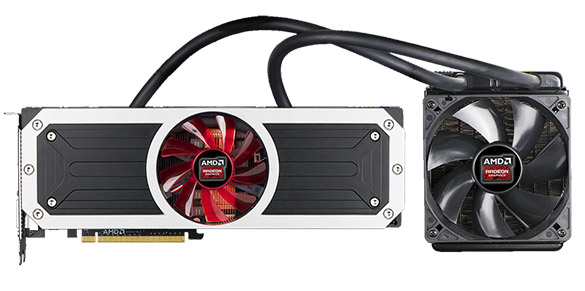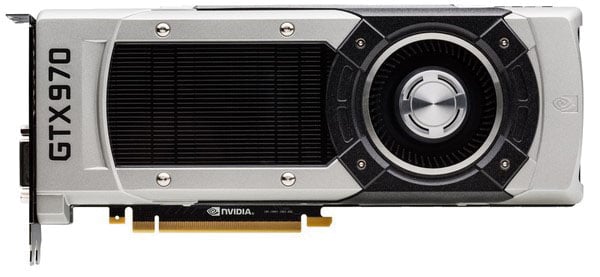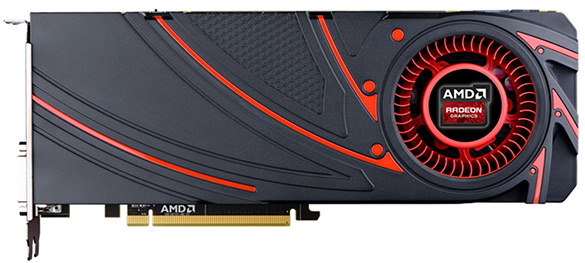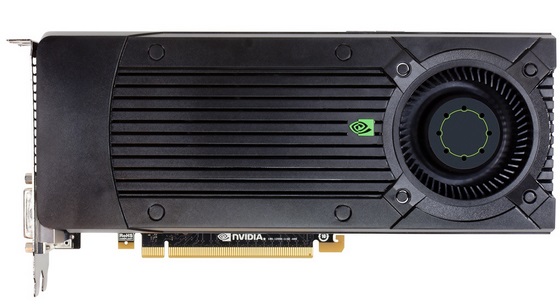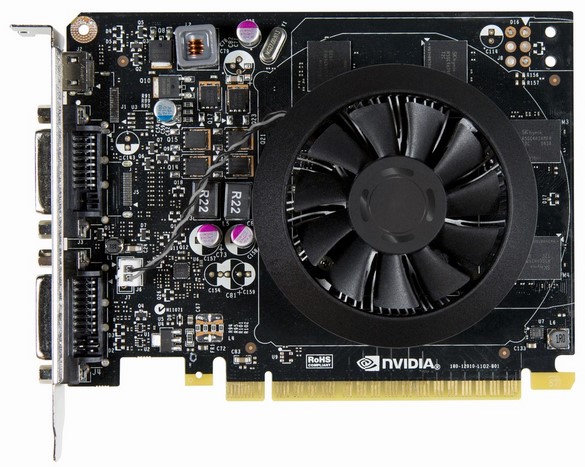HotHardware PC Components Gift Guide 2014
Graphics: The Pixel Pushers
Graphics cards are an integral part of every high-performance PC, especially if you're a gamer. Here are a few of our picks in virtually all price segments. We didn't bother choosing any uber-cheap, sub-$99 cards, since integrated / on-processor graphics have gotten so good, but if you've got a couple hundred bucks (or more--sometimes much more!) at the ready, here are some cards you should consider.
Ultimate Performance:
AMD Radeon R9 295X2 - $729 and Up
The AMD Radeon R9 295X2 is a complete departure from previous-gen Radeons. Gone are the old plastic fan shrouds, in favor of all metal construction. And cooling each GPU is a closed-loop, liquid cooling system with dual heat plates and a 120mm radiator assembly. There is still a fan on the card itself, but it is used to cool the VRM and other surface mounted components. The Radeon R9 295X2 is a full 12” long, and as we mentioned earlier, packs a pair of full Hawaii GPUs. The two GPUs combined equate to roughly 12.4B transistors and offer compute performance of up to 11.5 TFLOPs. There are a total of 5632 stream processors (2816 per GPU), with 8GB of GDDR5 memory (4GB per GPU) running at 5Gbps, linked to the GPU on dual 512-bit memory interfaces. The GPUs can clock up to 1018MHz and feature Hawaii’s full complement of texture units and ROPs. Peak textured fill-rate is 358.3 GT/s and pixel fill-rate tops out at 130.3 GP/s. For all intents and purposes, the R9 295X2 is a full Radeon R9 290X CrossFire configuration on a single card.
GeForce GTX 980 SLI - $1100 and Up
The NVIDIA GeForce GTX 980 and GTX 970 we recommend a little later are somewhat similar. The cards share the same 4GB frame buffer and GM204 GPU, but the GTX 970’s GPU is clocked a bit lower and features fewer active SMs and CUDA cores. The GeForce GTX 980’s GM204 GPU has all of its functional blocks enabled and is the full implementation of the chip. The fully-loaded GeForce GTX 980 GM204 GPU has a base clock of 1126MHz and a Boost clock of 1216MHz. The GeForce GTX 980 is also packing 2048 CUDA cores and 128 texture units. The 4GB of video memory on the card is clocked at a blisteringly-fast 7GHz (effective GDDR5 data rate) and the memory links to the GPU via a wide 256-bit interface. At those clocks, the GeForce GTX 980 offers up a peak textured fillrate of 144.1 GTexels/s and 224 GB/s of memory bandwidth. Pair a couple of these babies together and you've got one of heck of a killer graphics setup that can handle virtually any game available at ultra-high resolutions.
Enthusiast Level:
GeForce GTX 980 - $569 and Up
At the enthusiast level, we're also going to recommend the NVIDIA GeForce GTX 980. The cards specifications and main features are mentioned above, but also consider this: The GeForce GTX 980 is easily the fastest, single-GPU powered card currently available. It also has one of the most extensive feature sets, with support for DSR, MFAA, G-SYNC, and the rest of NVIDIA's proprietary feature. In addition, the GeForce GTX 980 runs cool, is super quiet, and it consumes a minimal amount of power--relatively speaking. If you want the best single-GPU powered card available, look no further.
High-Performance Level:
NVIDIA GeForce GTX 970 - $305 and Up
The GeForce GTX 970 features the same GPU as the higher-end GTX 980, but with a few functional blocks disabled. And it's got lower frequencies too. The GTX 970 clocks in with a base clock of 1050MHz and Boost clock of 1178MHz. As we’ve mentioned, a few of the blocks in the GPU have been disabled in the GTX 970, and as such, it sports fewer cores and texture units. Whereas the GeForce GTX 980 is packing 2048 CUDA cores, the GTX 970 has 1664. The GTX 980 also has 128 texture units to the 970’s 104. the GTX 970 offers a peak textured fillrate of 109.2 GTexels/s and the same amount of memory bandwidth, however. Though it's not quite as powerful as the GeForce GTX 980, the GTX 970 is still an awesome card and is a clear front runner in its price segment.
AMD Radeon R9 290X - $339 and Up
Until the GeForce GTX 980 came along, the AMD Radeon R9 290X was arguably the fastest single-GPU out there. The Radeon R9 290X is roughly 11” long and two-slots wide. The Radeon R9 290X sports a “Hawaii” GPU, with 2816 Stream Processors, 176 texture units, and an engine clock of up to 1GHz. At that speed, the card is capable of up to 5.6 TFLOPS of compute performance and a 176 GTexel/s texture fill rate, which are increases of about 30% over the older Radeon HD 7970 GHz Edition (4.3 TFLOPS, 134.4 GTexel/s). The Radeon R9 290X’s pixel fillrate, however, is roughly 90% higher than the 7970GHz Edition’s—33.6GPixels/s vs. 64 GPixels/s. The Radeon R9 290X also features a 512-bit memory interface with 4GB of GDDR5 memory clocked at an effective data rate of 5.0Gbps, for a peak of roughly 320GB/s of memory bandwidth. All told, geometry processing, compute performance, texture and pixel fillrates, and memory bandwidth have all been increased significantly over AMD’s previous high-end GPU.
Mainstream Level:
AMD Radeon R9 285 - $235 and Up
The first product built around the AMD Tonga GPU is the Radeon R9 285. As its name suggests, this card falls into AMD’s current line-up in between the Radeon R9 270X and R9 280X, but there’s more to the story than just that. AMD’s reference specifications call for up to a 918MHz engine clock for the Radeon R9 285 with 1375MHz memory (5.5 Gbps effective). The specifications list 2GB of on-board memory, but 4GB variants are coming down the pipeline as well. Typical board power is 190W and cards require a pair of supplemental 6-pin power feeds. Support for Direct X12, Mantle, and AMD’s TrueAudio technology is also present.
NVIDIA GeForce GTX 760 - $199 and Up
The NVIDIA GeForce GTX 760’s specifications are going to look like somewhat of a cross between the GeForce GTX 670 and 660 Ti, with some GeForce GTX 700 series features thrown into the mix. If you recall, the GeForce GTX 670 has four Graphics Processing Clusters, with seven SMXes, 1344 CUDA cores, 112 texture units, and 32 ROPs, with a 256-bit memory interface. The GTX 660, however, which is powered by GK106, has 3 GPCs, with 960 CUDA cores, 80 texture units, 24 ROPs, and a 192-bit memory interface. The GeForce GTX 760 has three of four GPCs, with six SMXes, 1152 CUDA cores, 96 texture units, and 32 ROPS, but retains the 256-bit memory interface.
In terms of its GPU and memory clock speeds, the GeForce GTX 760 is right in-line with the GeForce GTX 660. NVIDIA’s reference specification call for a 980MHz base GPU clock, with a 1033MHz Boost clock and 6008MHz (effective) memory. At those frequencies, the GTX 760’s texture fillrate is 78.4GT/s with peak memory bandwidth of 144.2GB/s. Unlike its 600-series predecessors though, the GeForce GTX 760 supports GPU Boost 2.0, so it should be able to maintain peak boost clocks longer
Entry Level:
NVIDIA GeForce GTX 750 Ti - $135 and Up
The GeForce GTX 750 Ti features the GM107’s full complement of 640 CUDA cores (1 GPC, 5 SMs), with 40 texture units and 16 ROPs. The GPU is linked to 2GB of GDDR5 memory via a 128-bit interface. With those specification, the GeForce GTX 750 Ti offers up 40.8 Gigatexel’s of fillrate and 86.4 GB/s of peak memory bandwidth. The GeForce GTX 750 has one SM disabled, for a total of 512 CUDA cores, 32 texture units, and 16 ROPs. It offers up 32.6 Gigatexel/s of fillrate and 80 GB/s of peak memory bandwidth. NVIDIA calls for a base GPU clock of 1020MHz and boost clock of 1085MHz with an effective memory clock of 5400Gbps. The GeForce GTX 750 Ti isn't a barn-burner, but it supports all of the features necessary to run any game available, and it's quiet and low-power too.
AMD Radeon R9 270 - $139 and Up
If you were to compare the Radeon R9 270’s reference specifications to the Radeon HD 7870 GHz Edition, you’d spot a number of similarities, which is to be expected considering the cards are powered by the same piece of silicon. The R9 270’s GPU and memory clocks are somewhat different, however. According to AMD’s reference spec, the Radeon R9 270’s GPU frequency peaks at up to 925MHz (slightly lower than the 7870 GHz Edition), but its memory clock has been increased to an effective 5.6Gbps. Versus the 1GHz (GPU) and 4.8Gbps (memory) of the Radeon HD 7870 GHz Edition, the Radeon R9 270 offers slightly lower compute performance (2.37 TFLOPS vs. 2.56 TFLOPS), but much more memory bandwidth--179.2GB/s vs. 153.6GB/s to be exact. Also note that the Radeon R9 270 is only a 150W card. As such, it requires only a single PCIe 6-pin supplemental power connector. That's something to consider if upgrading an older rig with a middling power supply.

